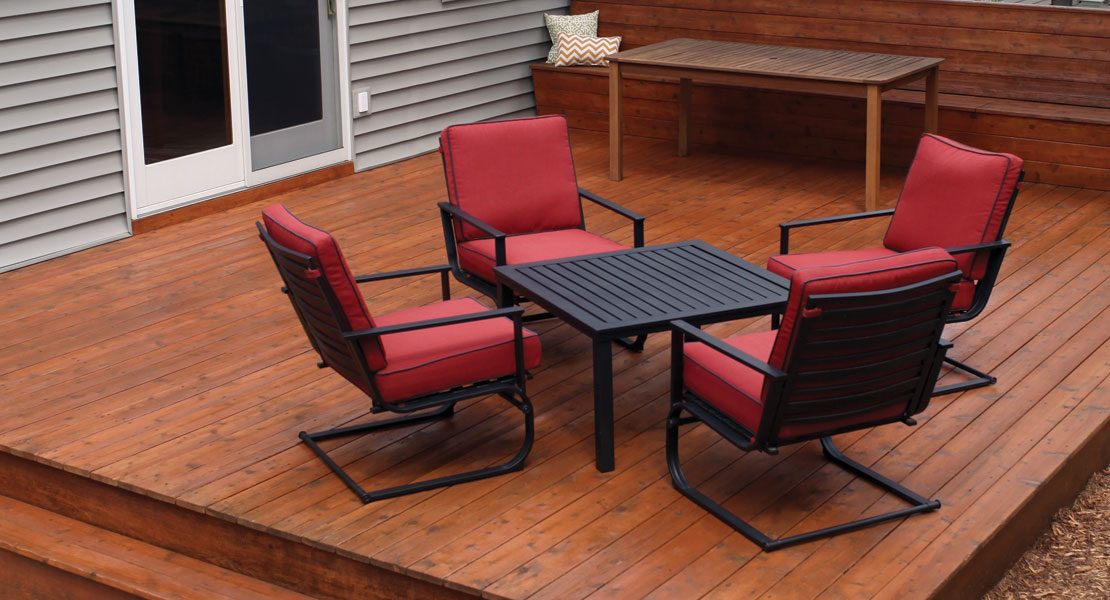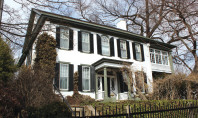All Decked Out

By Andy Cook
Are there are some home improvement projects on your To-Do list this year? If so, consider this: according to the 2014 Remodeling Cost vs. Value report, which is an annual collaboration between Remodeling Magazine and REALTOR Magazine, adding a deck or patio is #2 on the list of top 10 most cost-effective projects.
“With many factors to consider such as cost and time, deciding what remodeling projects to undertake can be a difficult decision for homeowners,” said National Association of Realtors President Steve Brown. “Realtors know what home features are important to buyers in their area, but a home’s curb appeal is always critical since it’s the first impression for potential buyers.”
There are many ways to add appeal to your home, and one of the easiest ways is through the addition of a deck. Now is the time of year to plan, as appropriate weather will be here soon. And whether you decide to do it yourself or hire a pro, considering these factors will help you have a successful project.
There are several things to keep in mind as you plan for a deck. Here are some of the pros and cons of each.
Materials
Long gone are the days of simply using pressure-treated lumber as decking material. You have choices that include both synthetic and natural materials. The experts at ThisOldHouse.com have made it easy to help in the decision-making process. If you want easy-care decking, choose manufactured boards; if looks trump all, opt for wood. They also provided an easy comparison:
Pressure-Treated Wood
Pros
• Easy to work with
• Takes stains and waterproofing easily
Cons
• Will corrode unprotected metal fasteners and connectors
• Boards can warp and crack
• Requires frequent cleaning, resealing and restaining
Price: $
Composite
Pros
• Comes in a range of colors and textures
• Long-lasting if cared for properly
• Won’t splinter, crack, or rot
Cons
• Some products look less wood-like than others
• Scuffs and scratches easily
• Spills can leave stains
Price: $$
PVC
Pros
• Superior resistance to moisture
• Doesn’t swell or shrink
• Not prone to rot or termites
• Easy to clean
Cons
• Some products look less wood-like than others
• Boards can squeak when walked on
Price: $$
Cedar or Redwood
Pros
• Offers natural insect resistance
• Weathers to a handsome shade of gray
• Easy to work with
Cons
• Requires frequent maintenance and waterproofing
Price $$–$$$, depending on location
Location / Activities
DIYNetwork.com says this location is important and will govern many of the other decisions. The experts suggest you think about exactly where the deck is going to be built. Location, design and materials are the most important things to think about. Should it be directly in the sun, or shade or should it be near the pool? What type of access should it have to the house and how does it relate to the neighbors’ house?
“With many factors to consider such as cost and time, deciding what remodeling projects to undertake can be a difficult decision for homeowner.”
Also think about what you’ll be doing on your deck. Let your favorite outdoor activities (such as meals, relaxing, reading a book, or getting some sun) dictate its size, shape, and features.
If your deck is going to be for meals with friends and family, make sure it’s big enough so your table will fit comfortably. A good rule of thumb is to add 4 feet all the way around the table so that people can walk behind those who are seated. Also, if you have the space, leave room for a prep station and serving area, as well as a grill. Create a zone for lounge chairs and a low table or two in a sunny (or shady) spot.
It’s also a wise idea to ‘test drive’ your deck plans. Whether you use a garden hose, or stakes and string, outline the size of the deck’s footprint and see if it makes sense. If you have existing deck furniture, place it where you imagine you’ll use it and see if it makes sense.
Safety
Check with your local township to find out if there are any permits required before undertaking your project. “The last thing anyone wants is to spend a whole summer building a beautiful deck, only to find out it must be ripped up because there was no building permit. There are codes to abide by in most towns if the deck is higher than 18 inches, or if it’s over 100 square feet,” advises DIYNetwork.com.
Code requirements and permits may govern such things as design, construction, size limits, stairs and handrails, and are really for your safety. If you are in a neighborhood governed by a homeowners’ association, there may be guidelines on aesthetics. Also, be sure to take into account if your plans include a future use (e.g. a hot tub), because that will impact how sturdy the supporting structure needs to be.
Design
Here’s where using a professional may be worth it. Do you have a sloped yard? Perhaps a multi-level deck is the answer. Do you get a lot of sun? Maybe a pergola would be a nice design element. Have a large tree you really love? See if it can be incorporated into the plan. Also consider lighting (risers, post caps and such). Some decks act as a walkway to the front door; incorporate LED lighting into the floorboards to act as guide lights…they look great.
Remember, let the style of your house influence the look and feel of your deck, so it has an integrated design you can be proud of.




















